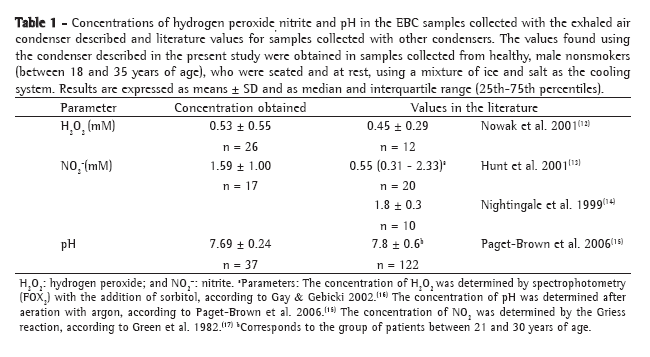



Sergio Ricardo Santos, Maria Stela Gonçalves, Fernando Sergio Studart Leitão Filho, José Roberto Jardim
ABSTRACT
Objective: To define the profile of smokers who seek professional assistance through a smoking cessation program and to compare smoker profiles among males, females and elderly people. Methods: Two-hundred and three smokers were prospectively evaluated. The participants completed questionnaires related to smoking history, history of psychiatric disorders, depression, anxiety and nicotine dependence as well as a general self-report questionnaire. Results: In this sample, 58.6% of the individuals were female (119). The mean age was 45.3 ± 12.0 years, with no statistically significant difference between genders (p = 0.391). The majority of the individuals in the sample (84.2%) presented socioeconomic class C or above. Sixty-three percent had at least a high school education. Depression was more often referred to by women, and the difference between genders was borderline significant (p = 0.069). However, when depression was evaluated using the Beck Depression Inventory, there was no statistically significant difference between genders and between elderly and nonelderly people. Conclusions: In the profile of the smokers who sought assistance, we identified aspects (such as being female and having been diagnosed with depression) that are known predictors of treatment failure. This shows the importance of carrying out a complete pre-evaluation of the profile of a smoker who seeks a smoking cessation program. Thus, procedures can be adopted prior to and during the treatment of the smoker, with the objective of increasing treatment success rates.
Keywords: Anxiety; Depression; Smoking.
RESUMO
Objetivo: Definir o perfil do fumante que procura um serviço de cessação do tabagismo e comparar os perfis observados em homens, mulheres e idosos. Métodos: Foram avaliados, prospectivamente, 203 fumantes. Os indivíduos responderam questionários relacionados ao histórico tabagístico, antecedentes psiquiátricos, questionários específicos para depressão e ansiedade, questionário de dependência à nicotina e um questionário geral auto-aplicável. Resultados: Nesta amostra, 58,6% dos indivíduos eram do sexo feminino (119). A média de idade para a amostra foi 45,3 ± 12,0 anos, sem diferença significante entre os sexos (p = 0,391). A maioria da amostra estudada apresentou classificação econômica C ou superior (84,2%). Sessenta e três porcento dos fumantes possuíam pelo menos o segundo grau completo. Depressão foi muito mais referida entre as mulheres com diferença estatística marginalmente significante (p = 0,069). Porém, avaliando-se depressão pelo Inventário Beck de Depressão, não houve diferença estatisticamente significante entre os sexos e entre idosos e não-idosos. Conclusões: Foram identificados aspectos no perfil dos fumantes que procuraram este serviço que já são reconhecidos na literatura especializada como preditores de insucesso no tratamento (como pertencer ao sexo feminino e diagnóstico de depressão). Isto demonstra a importância de se realizar uma completa avaliação prévia do perfil do fumante que procura um centro especializado, para que medidas possam ser tomadas antes e durante a abordagem do fumante, com o objetivo de se aumentar as taxas de sucesso no tratamento.
Palavras-chave: Ansiedade; Depressão; Tabagismo.
Introduction


